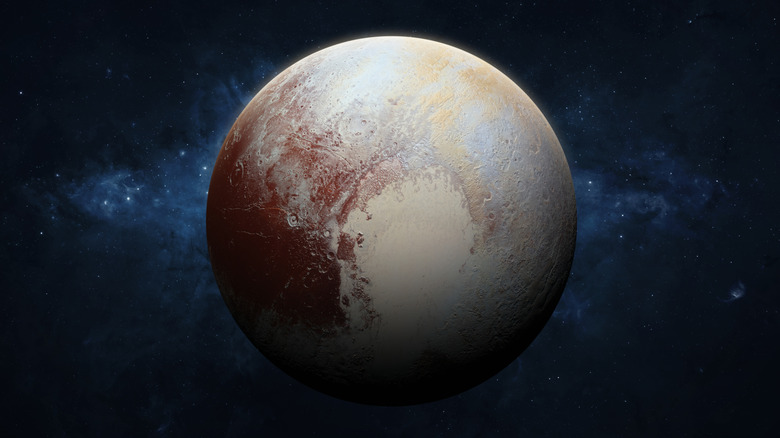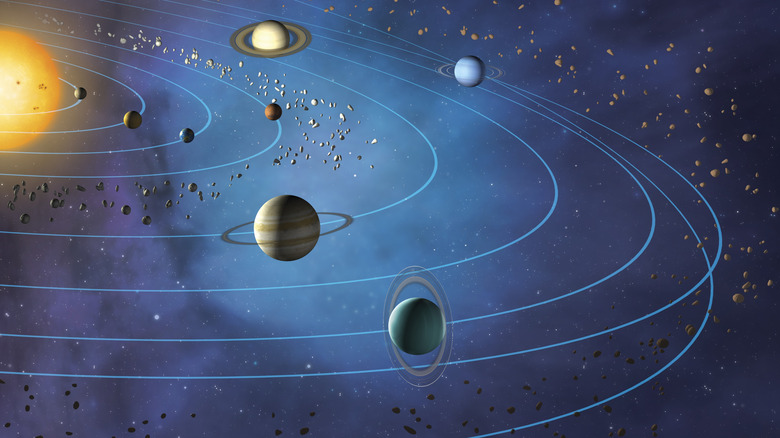Our Solar System Might Have A New Ninth Planet (And It's Not Pluto)
In 2006, updated research led to Pluto being controversially demoted to dwarf planet status by the International Astronomical Union. The reasoning was that Pluto's location in the far-flung Trans-Neptunian region of the solar system meant that other objects might cross its orbit. Since Pluto is so small — roughly 1,400 miles across, or around the same distance as flying from New York to Houston — it wouldn't be able to clear those objects out of its way. Therefore, it couldn't be classified as a planet and instead became known as a dwarf planet.
Since then, scientists have been working on the theory that there might be another, currently undiscovered ninth planet that's even further out than Pluto. Various studies and simulations have been conducted to try and estimate where that planet might be located and how large it might be, but so far, researchers haven't agreed on a definitive answer. However, in April 2025, a new study co-authored by scientists in Taiwan, Japan, and Australia claimed to have found a potential candidate for this formerly hidden ninth planet in two datasets that were captured 23 years apart.
Why scientists think Planet Nine exists
The study, which was published in the "Publications of the Astronomical Society of Australia" journal, doesn't provide concrete proof that Planet Nine exists. However, it's the latest development in a mounting pile of evidence to suggest that a large planet in the Kuiper Belt is waiting to be officially discovered. The Kuiper Belt is an area of the Solar System with lots of small, icy bodies, and researchers have found some unusual clustering patterns among them. These clusters are extremely unlikely to have formed by pure chance, and a leading theory suggests that they instead formed thanks to the presence of a large, currently undiscovered planet: the elusive Planet Nine.
Observations of the potential Planet Nine are extremely difficult, as it's so far out in the Solar System that it would reflect only the tiniest amount of sunlight. Predictions estimate that the planet's orbit might be 23 times larger than that of Neptune, the most distant currently discovered planet. Any light or infrared radiation reflected by the planet wouldn't necessarily be detectable from Earth, but it might be detectable via satellite data. The new study used two datasets that were gathered by satellites, one in 1983 and the other in 2006-2007. The researchers were looking for objects that matched the mass and distance estimations of Planet Nine and that showed up in both datasets.
The study found one good candidate
After ruling out objects that didn't fit the description or were too faint to properly identify, the researchers found only one candidate in the data that fit the description for Planet Nine. For now, it hasn't been confirmed that this candidate object is actually a new planet, but it paves the way for further research to take place. Scientists can now observe this object to gather more data, which will be used to determine if it is, in fact, a new planet or not.
For now, the outer reaches of our 4.6 billion-year-old solar system continue to be shrouded in mystery, with the classification of objects changing as scientists gain a new understanding of them and newly discovered objects pose more questions than answers. The newly unveiled candidate Planet Nine certainly raises a lot of questions, but scientists will no doubt be working on the answers to those questions already.


